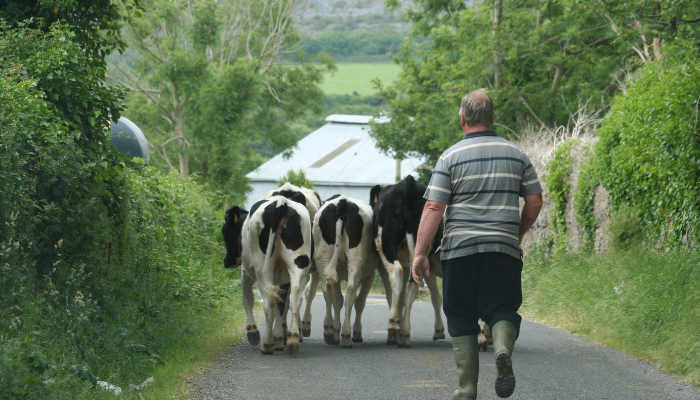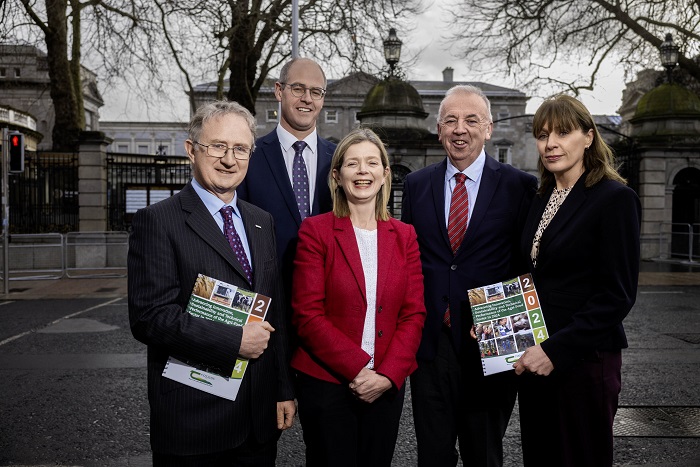28 January 2025
One in three farmers are over 65

Ireland’s aging farming population, and a decline in young farmers entering the sector over recent decades, has the potential to pose challenges to the future sustainability and resilience of agriculture going forward.
That’s according to Dr. Emma Dillon, a Teagasc Senior Research Officer and Economist with the Teagasc National Farm Survey (NFS) Department, who briefed delegates at the launch of the ‘Advancing Innovation, Sustainability and Technical Performance of the Agri-Food Sector in 2024’ report, held in Dublin on January 27.
Painting a picture of the age profile of Irish farmers as recorded through the Teagasc National Farm Survey, Dr. Dillon noted that the average age of Irish farmers is 58 years, with 33% of the farming population being over 65 years. By sector, the average age of farmers is 54 years on dairy farms, 59 years on cattle farms, 56 years on sheep farms and 58 years on tillage farms.
The age profile of farming households was also discussed. Being defined as a household where the farmer is aged over 60 with no household members being below 45, 19% of dairy farms, 40% of cattle farms, 39% of sheep farms and 25% of tillage farms were classified as being ‘high age profile households’.

Pictured at the launch of the ‘Advancing Innovation, Sustainability and Technical Performance of the Agri-Food Sector in 2024’ report are from left to right: Director of Teagasc, Professor Frank O Mara; Dr Stan Lalor, Director of Knowledge Transfer at Teagasc; Dr. Siobhán Jordan, Head of Technology Transfer and Commercialisation at Teagasc; Professor Pat Dillon, Director of Research at Teagasc; and Dr. Emma Dillon, Teagasc Senior Research Officer and Economist with the Teagasc National Farm Survey (NFS) Department.
Worryingly from a succession planning point of view, Dr. Dillon also provided data on the number of farmers over 60 years of age who have identified a successor. Of this cohort, 38% of dairy farms, 32% of cattle rearing (mainly suckler), 42% of cattle other (mainly finishers), 32% of sheep, and 64% of tillage farmers have yet to identify a successor.
Where a successor has been identified, Dr. Dillon explained, 37% of farm operators expect the farm transfer to occur in the next five years, while 40% expect the transfer to occur in the next 5 to 10 years. Additionally, the NFS dataset shows that 86% of the identified successors are male, while 28% of the identified successors have a third level agricultural qualification.
For farms where no successor has been identified, Dr. Dillon shared some of their future farming intentions; 64% of those surveyed intend to continuing farm as is over the next five years, while 14% are planning to scale back farming activity.
Teagasc’s role
Despite the challenges of an aging population, Dr. Dillon explained that Teagasc plays a pivotal role in attracting, supporting and establishing younger generations in farming. Of note are the over 3,600 students participating in Teagasc education programmes. Surveys of these, undertaken five years after graduation, consistently show over 90% are involved in farming, but with an increase in the proportion of these which are in part-time farming. The Teagasc Walsh Scholarship Programme is also a key contributor to capacity building for the sector, as is the Knowledge Transfer Masters Programme.
Other Teagasc initiatives include: Transferring the Family Farm Clinics; engaging with Teagasc clients on farm partnership options; the sustainable transition of the rural economy through generational renewal; Multi Actor Succession Teams (MAST) for generational renewal; data on Farm demographics from the National Farm Survey (NFS); addressing the challenge if delayed farm succession; and highlighting the importance of farming in upland landscapes.
